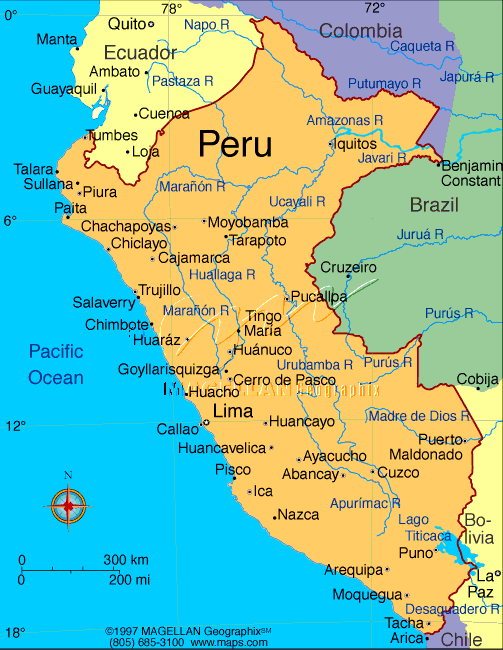
Peru is a presidential republic in the western part of South America, famous for the lost city of the Incas, Macchu Picchu. During the 16th century, Peru became a European colony and finally, after almost 300 years of Spanish colonial reign, the country became independent in 1824.
Peru’s recent history has experienced ups and downs, especially politically. During the 1990s, the president of Peru was Alberto Fujimori.
His dictatorial style and human rights violations (state murder, torture) that took part during a so called “dirty war” lead to the crumbling of the Peruvian democracy. After Fujimori was reelected in 2000, the news came out that his security chief bribed someone from the opposition. Since Fujimori had openly spoken out against bribing (obviously he was not opposed to it after all), he resigned as president and fled to Japan. In 2007, he was found guilty and was sentenced to 6 years in prison. Although Fujimori as a leader is not necessarily a role model, his reforms lead to economic growth during the 1990s. In 2006, Alan Garcia became the president of Peru and all expectations were, and still are, on him to keep up the economic and structural reforms that have been leading to Peru’s growth during the past years.
Peru´s economy depends strongly on the export of coffee and copper, with Peru being the second largest producer of copper and zinc in the world (Political Country Forecast, 2006). During the 1990s, Peru endured political instability, as well as internal unrest (guerilla wars). Therefore, the economic growth decreased and Peru experienced financial shortages. However, with the beginning of the new century, the economy (meaning the GDP) picked back up and Peru experienced a GDP growth of about 7.4%.
During the 1980-1990s, Peru went through a long phase of hyperinflation. Fujimori was able to decrease three digit inflation rates to rates with only one digit, as shown below.
The inflation rate has decreased from its highest percentage of about 750% in 1990 to about 2% in 2006. Clearly, these ups and downs are a reflection of Peru’s inner turmoil during that time. At the moment, Peru´s government is relatively stable; therefore the country itself is able to grow and Peru experiences more growth than any other country in Latin America.
A future prediction:
The internal growth of Peru’s economy is looking up. The unemployment rate is at a low right now, meaning the population has more disposable income at hand which will lead to economic growth (car sales have already started to go up, as well as a steady increase in the cell phone market is observed). It is indicated that the GDP will continue to grow but due to its geographic location, Peru’s economy is intertwined with the economy of Asian countries, especially China. One challenge that Peru will face is due to the heavy reliance on its commodities like coffee and copper. In the future it is to be expected that market prices for these will decrease, therefore not leaving a whole lot of room for profits. A decrease in the need of commodities, especially by Asian countries, will lead to lower exports.
Overall, Peru has undergone many political and economical changes since its independence from Spain and more is still to come.


No comments:
Post a Comment